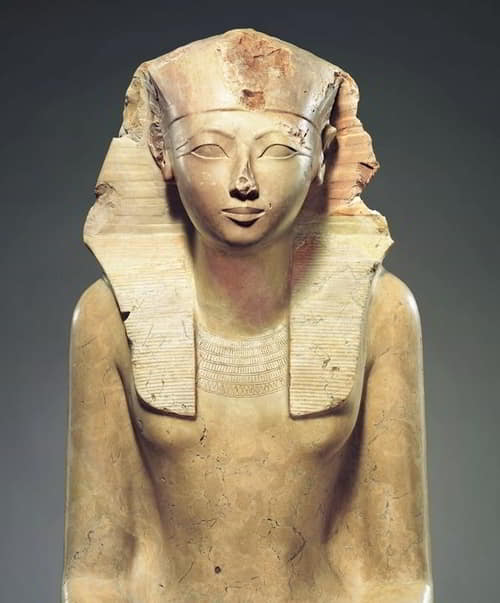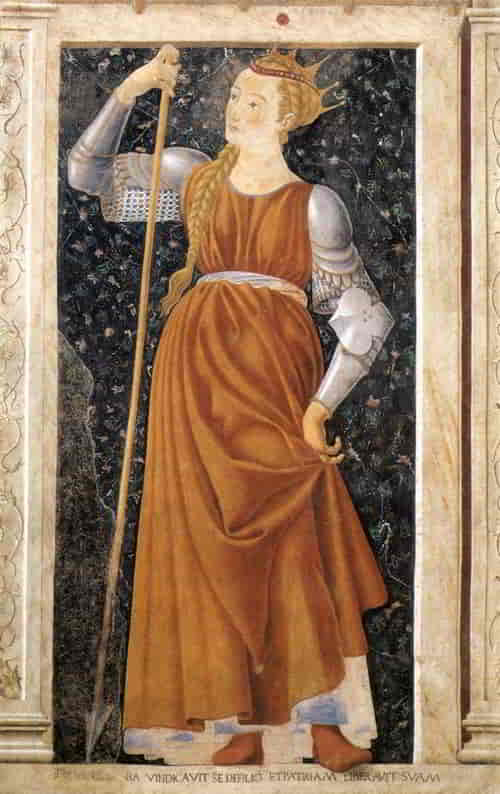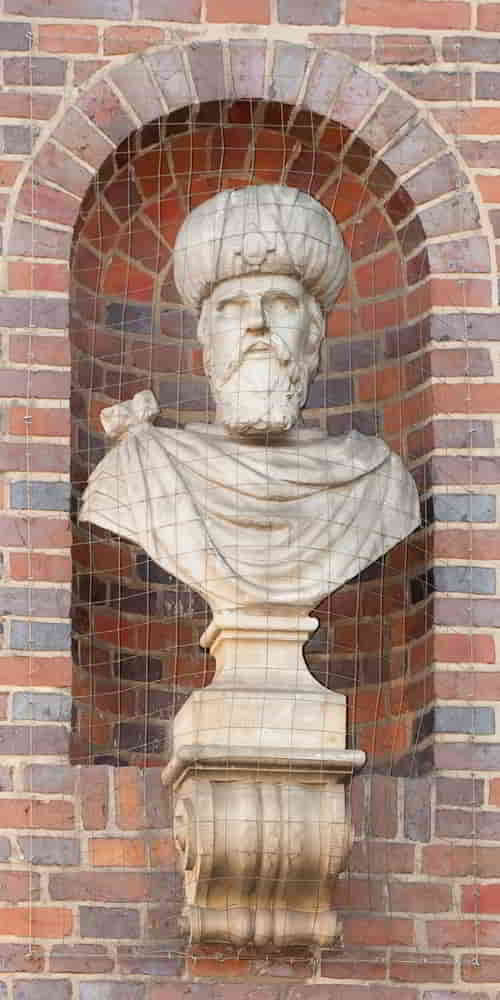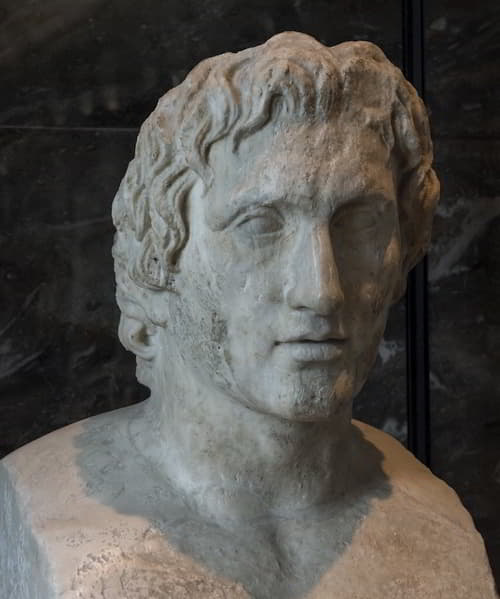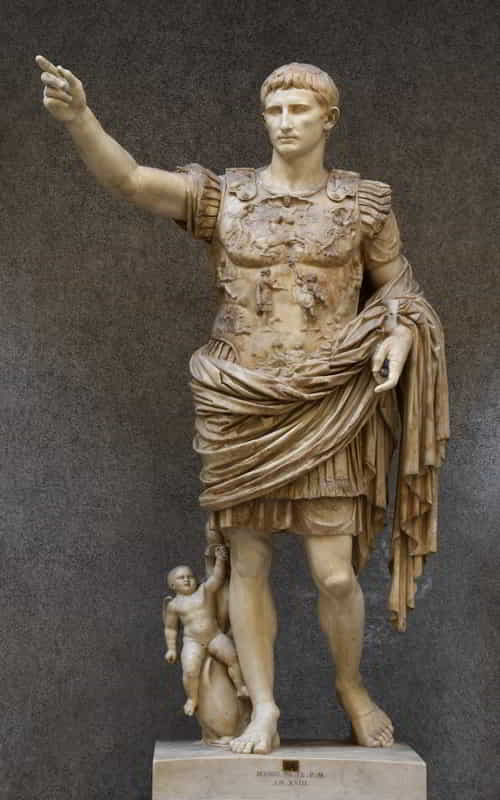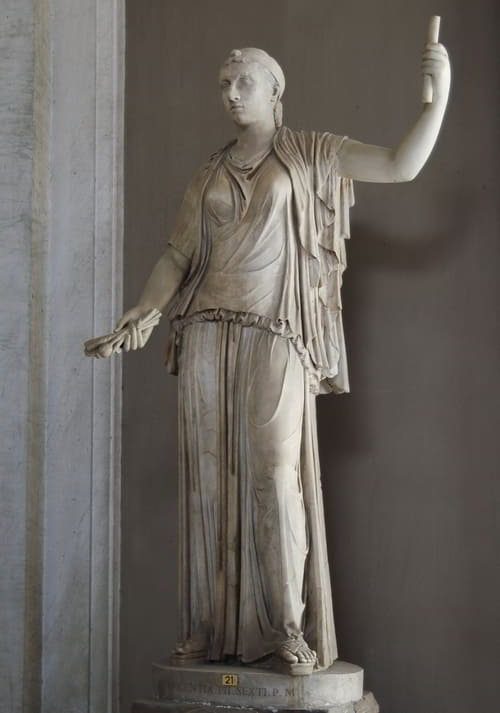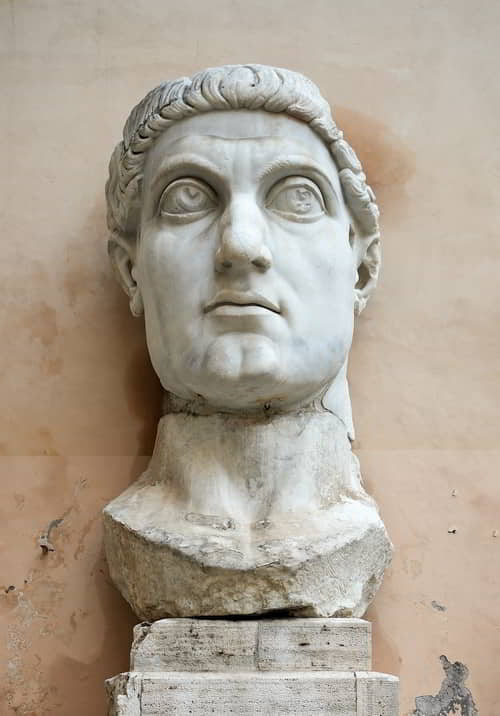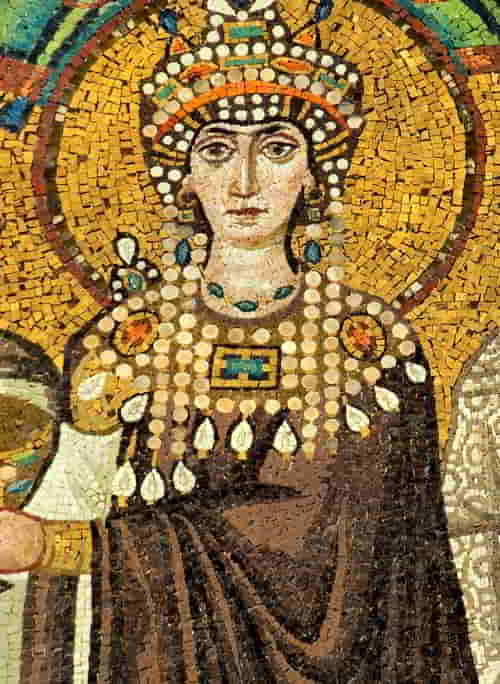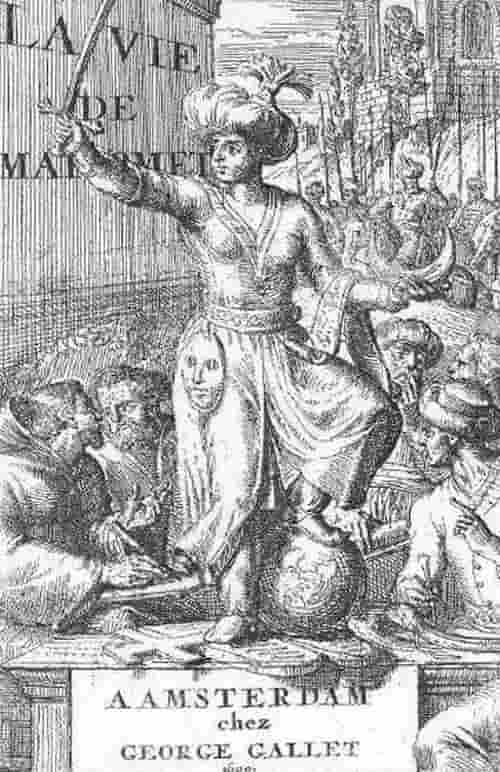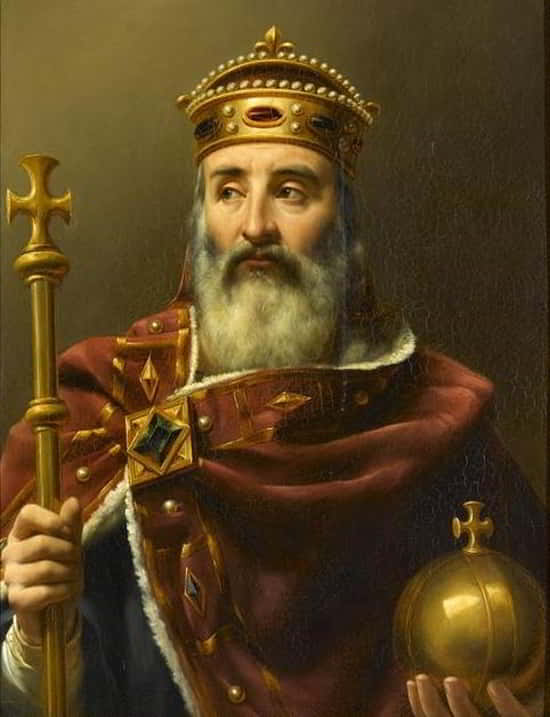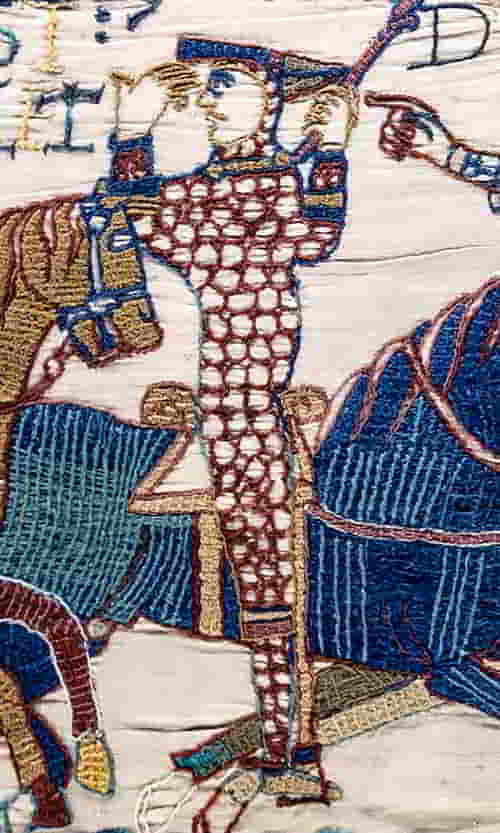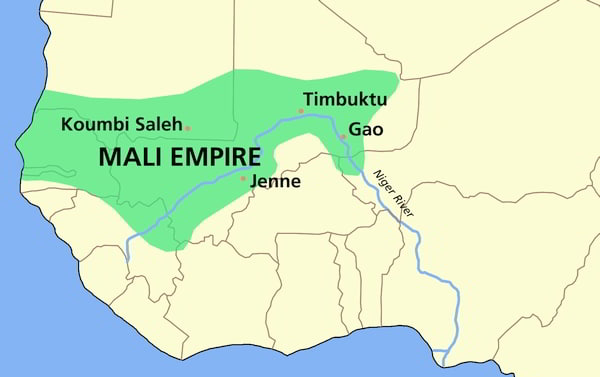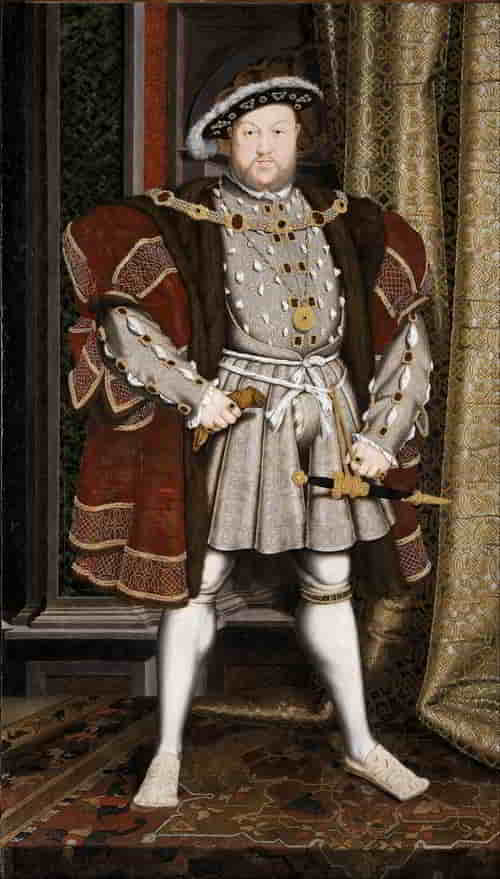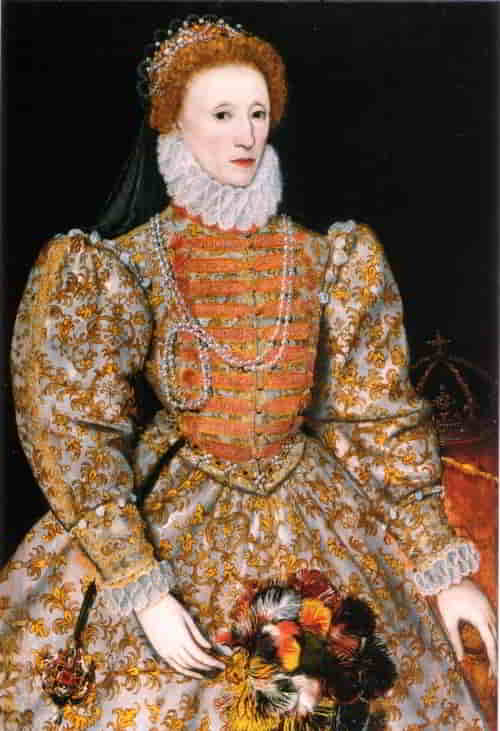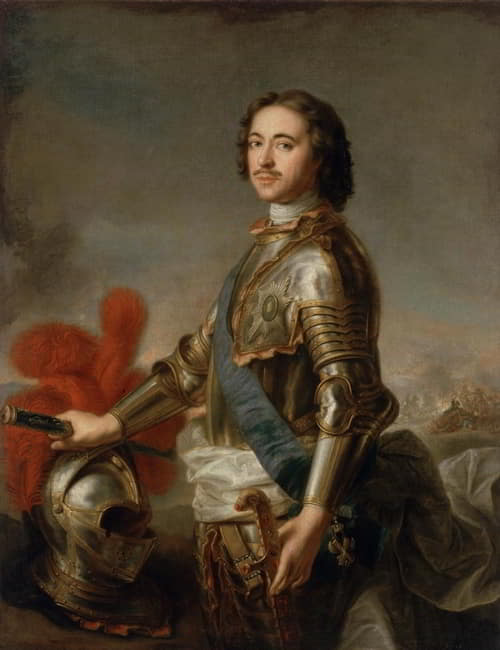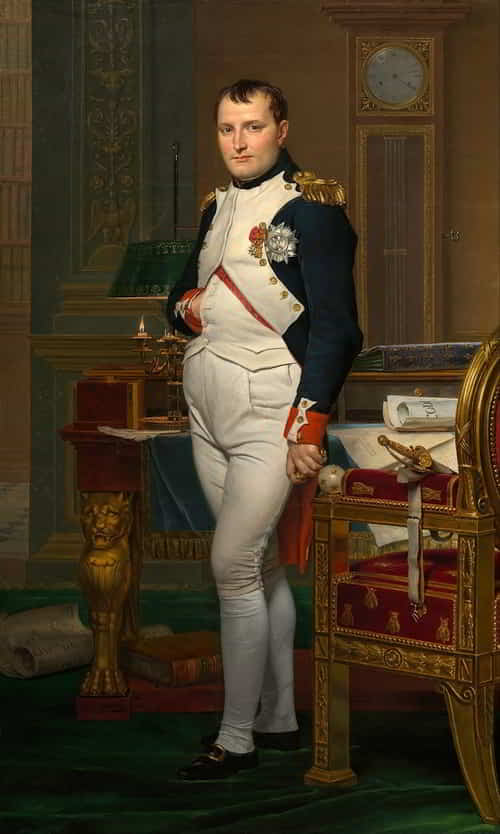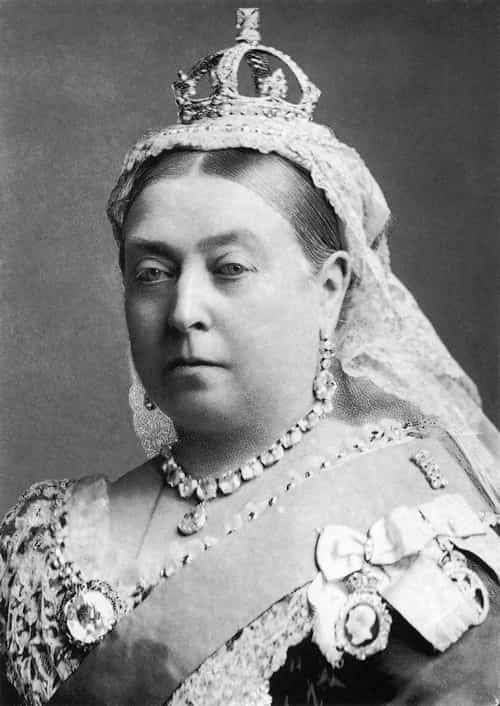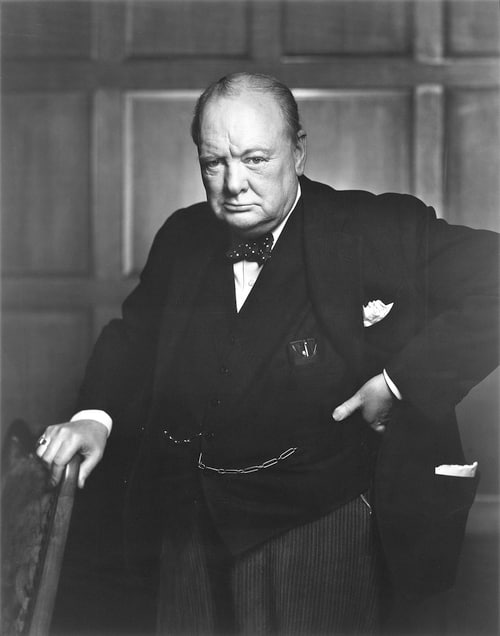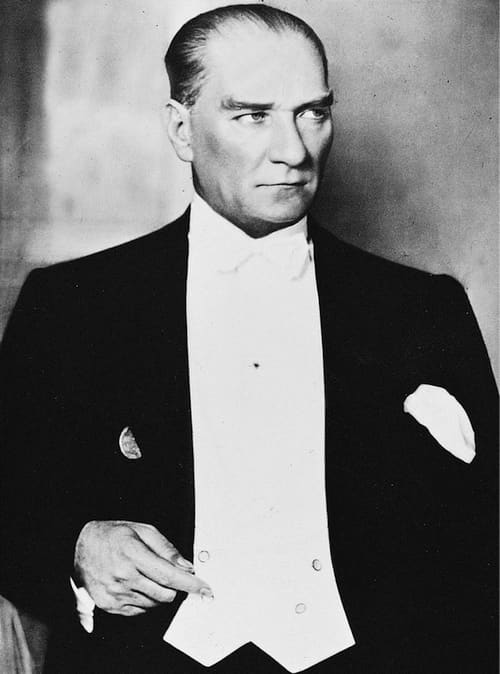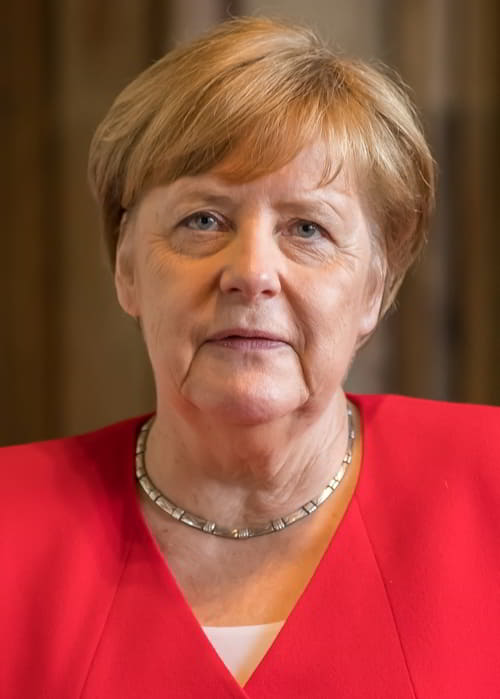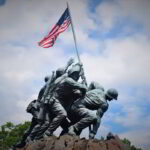Here are brief outlines with article links to the 35 Most Historically Important Rulers, Leaders, and Heads of State in world history from ancient times to recent. A multiple choice test at the end with answer key is included. Throughout history, countless rulers have left their mark on the world, shaping empires, sparking revolutions, and influencing the course of civilization. Choosing just 35 of the most important is no easy feat, as every leader’s impact can be debated and interpreted differently. I am including a few heads of state and rulers who may not have been on such a list in the past but whom I feel deserve to be.
35 Most Historically Important Rulers, Leaders, and Heads of State in this Article:
- Queen Hatshepsut of Egypt (1479-1458 BCE)
- Queen Tomiris of the Scythians (6th century BCE)
- Cyrus the Great (600-530 BCE)
- Ashoka the Great (304–232 BCE)
- Alexander the Great (356-323 BCE)
- Qin Shi Huang (259-210 BCE)
- Julius Caesar (100-44 BCE)
- Augustus (63 BCE-14 CE)
- Cleopatra VII (69-30 BCE)
- Constantine the Great (272-337 CE)
- Empress Theodora of Byzantium (527-548 CE)
- Muhammad (570-632 CE)
- Charlemagne (768-814 CE)
- King Alfred the Great of England (871-899 CE)
- William the Conquerer (1028-1087 CE)
- Genghis Khan (1162-1227 CE)
- Sundiata Keita, founder of the Mali Empire (1235-1260)
- Mansa Musa of Mali (1337-1341 CE)
- Queen Isabella I of Castile (1451–1504 CE)
- King Henry VIII (1491–1547 CE)
- Elizabeth I (1533-1603 CE)
- Peter the Great (1672-1725 CE)
- Napoleon Bonaparte (1769-1821 CE)
- Queen Victoria (1819–1901 CE)
- Emperor Meiji of Japan (1867-1912 CE)
- Mahatma Gandhi (1869-1948 CE)
- Winston Churchill (1874–1965 CE)
- Mustafa Kemal Atatürk (1881–1938 CE)
- Mao Zedong (1893-1976 CE)
- Franklin D. Roosevelt (1882-1945 CE)
- Nelson Mandela (1918-2013 CE)
- Ronald Reagan (1911-2004 CE)
- Margaret Thatcher (1925-2013 CE)
- Mikhail Gorbachev (1931-present)
- Angela Merkel (1954-present)
1. Queen Hatshepsut of Egypt (1479-1458 BCE): Hatshepsut, one of the most remarkable figures in ancient Egyptian history, was the fifth pharaoh of the 18th dynasty, reigning from 1479 to 1458 BCE. She is considered one of Egypt’s greatest pharaohs, known for bringing great wealth and artistry to the land. Despite the traditional gender norms of ancient Egypt, Hatshepsut assumed the full titles and regalia of a pharaoh, attaining unprecedented power for a woman. She sponsored successful trading expeditions, secured her legacy through the construction of enduring structures, and initiated ambitious building projects, such as the famous temple at Deir El-Bahri. She is recognized as the only woman to have ever taken power as king in ancient Egypt during a time of prosperity and expansion.
2. Queen Tomiris of the Scythians (6th century BCE): Queen Tomiris of the Scythians was a formidable warrior queen who led her nomadic people against the powerful Persian Empire. She ruled the Massagetae after her husband’s death and, together with her son, defended her territory. In 530 BCE, she achieved a significant victory by defeating and killing Cyrus the Great, the founder of the Achaemenid Empire. She was known for her fierceness and her determination to protect her family and her people. The story of her victory over Cyrus became a legend and has been depicted in various works of art throughout history.
3. Cyrus the Great (600-530 BCE): Cyrus the Great was the founder of the Achaemenid Empire, which was known for its tolerance and administrative efficiency. He established a vast Persian realm that encompassed the Near East from the Aegean Sea to the Indus River. His legacy includes the Cyrus Cylinder, considered one of the first human rights declarations. Cyrus was renowned for respecting the customs and religious traditions of the lands he conquered, and he is remembered for his political philosophy of tolerance and respect toward non-Persians. His influence extended to the Jewish scripture, where he is seen as a savior for allowing the Jews to return to their promised land and build the Second Temple in Jerusalem.
4. Ashoka the Great (304–232 BCE): Ashoka the Great was the Emperor of the Maurya Dynasty, whose conversion to Buddhism and promotion of nonviolence had a profound and lasting impact on India. After a pivotal battle, he transformed from a fierce conqueror to a benevolent emperor, embracing Buddhism, promoting non-violence, and establishing social reforms that influenced India for centuries. His empire covered a large part of the Indian subcontinent, stretching from present-day Afghanistan to present-day Bangladesh, and his patronage played an important role in the spread of Buddhism across ancient Asia.
5. Alexander the Great (356-323 BCE): Alexander the Great was a brilliant military strategist who conquered a vast empire stretching from Greece to India. His conquests spread Greek culture and laid the foundation for the Hellenistic world. He was undefeated in battle and is widely considered to be one of history’s greatest and most successful military commanders. Alexander’s legacy includes the cultural diffusion and integration that his conquests engendered, such as Greco-Buddhism and Hellenistic culture, which shaped and unified a vast area from the Eastern Mediterranean to the Himalayas. His settlement of Greek colonists and the resulting spread of Greek culture led to the overwhelming dominance of Hellenistic civilization and influence.
6. Qin Shi Huang (259-210 BCE): Qin Shi Huang was the first emperor of a unified China. He standardized laws, weights, and measures, and oversaw the construction of the Great Wall. His despotic rule and draconian punishments were dictated largely by his belief in legalist ideas, laying the groundwork for future dynasties’ cycles of tyranny and rebellion. He was born in 259 BC and became the King of the Qin State at the age of 13. By 221 BC, he had unified China, putting an end to centuries of political turmoil and constant warfare.
7. Julius Caesar (100-44 BCE): Julius Caesar was a Roman general and statesman known for his role in expanding the Roman Republic, reforming the calendar, and laying the groundwork for the Roman Empire. His assassination on the Ides of March (March 15) in 44 BCE marked a turning point in Roman history, leading to a series of civil wars and ultimately the transition to the Principate period of the Roman Empire. The assassination was primarily motivated by concerns that Caesar wished to crown himself king of Rome, exacerbated by his disrespectful actions towards the Senate and his dictatorial behavior. The site of his assassination, the Curia of Pompey, has recently been opened to the public in Rome.
8. Augustus (63 BCE-14 CE): Augustus, also known as Gaius Octavius, was the founder of the Roman Empire in 27 BC and became the first Roman Emperor, marking the transition from the Roman Republic to the Roman Empire. His reign, which lasted for four decades, was highly influential in transforming the Roman Republic into a long-lasting empire with peace and prosperity. Augustus established an autocratic form of government, where he was the sole ruler and made all important decisions. He never took the title of king or emperor, preferring to call himself princeps, first citizen, or first among peers, to maintain the appearance of limited power that had been important under the Republic. Augustus made significant changes to every aspect of Roman life , including securing outlying imperial provinces, building roads and public works, and fostering the arts.
9. Cleopatra VII (69-30 BCE): Cleopatra VII, also known as Cleopatra, was the last active pharaoh of Ancient Egypt. She ruled from 51 to 30 BCE and was a member of the Ptolemaic dynasty, descended from its founder Ptolemy I Soter, a Macedonian Greek general and companion of Alexander the Great. Cleopatra navigated a turbulent political landscape and maintained Egypt’s independence against Roman encroachment. Her reign was marked by her interactions with powerful Roman leaders, including Julius Caesar and Mark Antony. After her death, Egypt became a province of the Roman Empire, marking the end of Ptolemaic rule. Cleopatra was known for her intelligence, multilingualism, and political astuteness, and she is one of the best-known women in history, famed for her supposed beauty and intellect.
10. Constantine the Great (272-337 CE): Constantine the Great was a Roman emperor who reigned from AD 306 to 337. He was the first Roman emperor to profess Christianity and played a significant role in the transition of the Roman Empire into a Christian state. He is best known for making Christianity the main religion of Rome and for establishing Constantinople, which became a powerful city. His rule marked a significant pivot point between ancient history and the Middle Ages, and his impact on the Christian Church was profound. His conversion to Christianity was a turning point in the history of the Roman Empire, leading to significant changes in the religious landscape and the empire’s governance.
11. Empress Theodora of Byzantium (497-548 CE): Empress Theodora of Byzantium was the wife of Emperor Justinian I and a powerful figure in Byzantine history. She played a crucial role in shaping Byzantine law and politics, being mentioned in nearly all the laws passed during that period. Theodora is remembered as one of the first rulers to recognize the rights of women, passing strict laws to prohibit the traffic in young girls and altering the divorce laws to give greater benefits to women. Theodora’s partnership with Justinian I flourished, and she actively participated in state councils, shared her visions and political strategies with her husband, and was crowned as empress in the same ceremony as her husband, being recognized as his equal.
12. Muhammad (570-632 CE): The founder of Islam, Muhammad . Muhammad was an Arab religious, social, and political leader who founded Islam, uniting the Arabian Peninsula under a single faith and political entity. He was born in Mecca around 570 CE and, according to Islamic doctrine, was a prophet divinely inspired to preach and confirm the monotheistic teachings of earlier prophets. His teachings and the Quran continue to guide Muslims worldwide, shaping religious, political, and social life in countless societies. After facing severe opposition in Mecca, he and his followers emigrated to Medina in 622, known as the hijra, marking the beginning of the Islamic era. In Medina, he continued to receive divine revelations and built a community around the new faith. He later returned to Mecca, where he gained control and spread the belief in one God. When he died in 632, he had not named a successor, leading to disagreements among his followers.
13. Charlemagne (748-814 CE): Charlemagne was the King of the Franks and the first recognized emperor to rule Western Europe after the fall of the Western Roman Empire. His reign saw significant political, societal, and cultural changes that had a lasting impact on Europe in the Middle Ages. Charlemagne’s rule laid the foundation for the Holy Roman Empire and influenced the development of medieval Europe. He engaged in a series of reforms in administration, law, education, military organization, and religion, shaping Europe for centuries. His coronation as emperor in Rome by Pope Leo III in 800 represented the height of prestige and authority he had achieved, and he was laid to rest in the Aachen Cathedral, in his imperial capital city of Aachen.
14. King Alfred the Great of England (871-899 CE): King Alfred the Great of England was a renowned monarch who defended England against Viking invasions and laid the foundation for a unified Anglo-Saxon kingdom. He was a strong advocate for education and literacy, introducing wide-ranging reforms and promoting learning, as he believed that learning was essential for the acquisition of wisdom, not just knowledge of law and letters. He established a court school and proposed that all free-born young men in England should receive an education, setting the foundation for the development of the English state. He was the only English king to be given the title “the Great” due to his significant achievements and contributions to the development of the English state.
15. William the Conquerer (1028-1087 CE): In 1066, William capitalized on a series of political upheavals in England to launch his invasion, culminating in the decisive Battle of Hastings. The clash, immortalized in the Bayeux Tapestry, saw William’s Norman forces triumph over the Anglo-Saxon king, Harold Godwinson. Crowned William I in 1066, he became the first Norman king of England. He was also a shrewd administrator, introducing a centralized system of government and taxation known as the Domesday Book. He forever altered the English landscape, language, and culture, ushering in a Norman aristocracy that reshaped the nation’s social fabric.
16. Genghis Khan (1162-1227 CE): Genghis Khan was the leader who unified nomadic Mongol tribes into the Mongol Empire and established the largest contiguous land empire in history. His conquests facilitated trade and cultural exchange across Asia, but also resulted in widespread destruction and displacement. The Mongol Empire spanned from the Pacific Ocean in the east to the Danube River and the shores of the Persian Gulf in the west, covering approximately 9 million square miles at its peak. The Mongol Horde, led by Genghis Khan, was known for its fearsome reputation as an undefeated fighting force, conquering China, terrorizing Eastern Europe, sacking Baghdad, and attempting to take on the Mamluks in Egypt.
17. Sundiata Keita, founder of the Mali Empire (1217-1255): Sundiata Keita, the first ruler of the Mali Empire from 1235 to 1260, is renowned for his remarkable achievements. Despite facing physical challenges and political intrigue, he successfully united warring Malian tribes and laid the foundation for one of the wealthiest and most powerful empires in African history. His reign not only brought about a golden age of trade, learning, and cultural achievement but also established the territorial base of the empire and laid the foundations for its future prosperity and political unity. Additionally, he is credited with developing Mali’s mechanisms for agriculture, introducing cotton and weaving, and ensuring “absolute security” throughout his dominion towards the end of his reign.
18. Mansa Musa of Mali (1312-1341 CE): Mansa Musa of Mali was the ninth Mansa of the Mali Empire whose legendary pilgrimage to Mecca, during which he distributed vast amounts of gold, destabilized the economies of several cities. Despite his remarkable cultural and architectural advancements, Mansa Musa is often overshadowed by more familiar figures in African history. His reign is commonly regarded as Mali’s golden age, and he is known for his wealth and generosity, with claims that he was the wealthiest person in history. The extent of his actual wealth is not known with certainty, but it is widely acknowledged that his empire controlled and taxed the trade in salt and gold, contributing to his immense riches.
19. Queen Isabella I of Castile (1451–1504 CE): Queen Isabella I of Castile was a key figure in the unification of Spain. Alongside her husband Ferdinand, she sponsored Christopher Columbus’s voyages, which ultimately led to the Age of Exploration. Their support for Columbus’s expedition to the west was a strategic move to expand their territory. Isabella’s reign saw the founding of the Spanish Empire and the establishment of the Spanish Inquisition, making Spain a major power in Europe and the world. Her decisive actions and support for Columbus’s voyage were instrumental in shaping the course of history, ushering in an era of great wealth for Spain and Europe.
20. King Henry VIII (1491–1547 CE): King Henry VIII played a pivotal role in the English Reformation, a significant event that occurred in the 16th century and was part of the broader European Reformation, impacting the practice of Christianity in Western and Central Europe. During this period, the Reformation Parliament passed laws that abolished papal authority in England and declared Henry as the head of the Church of England, granting the monarch final authority in doctrinal disputes. The English Reformation, initiated by Henry VIII, led to the establishment of the Protestant Church of England, with the English monarch becoming its supreme head. This transformative process also involved the dissolution of monasteries, the abolition of the Mass, and the introduction of English language in religious services and the Bible.
21. Elizabeth I (1533-1603 CE): Elizabeth I was the Queen of England and Ireland from 1558 until her death. She navigated religious and political turmoil, established England as a maritime power, and sponsored cultural and artistic events. Elizabeth became queen at the age of 25, and her era, often referred to as the Elizabethan period, laid the foundation for the British Empire. Her reign saw the flourishing of English drama, the prowess of English maritime adventurers, and the defeat of the Spanish Armada. Elizabeth’s 44-year reign is generally considered one of the most glorious in English history, despite the considerable danger and difficulty it posed. She died at Richmond Palace on 24 March 1603, having become a legend in her lifetime.
22. Peter the Great (1672-1725 CE): Peter the Great was a transformative figure in Russian history. As the Tsar of Russia, he embarked on a series of sweeping reforms aimed at modernizing and westernizing the country based on Western European models. These reforms were influenced by major events in his life, including his trips to Arkhangelsk, the Azov Campaigns, and his Grand Embassy to Western Europe. Throughout his reign, Peter came to understand that Russia’s government worked best when organized by laws and institutions rather than by specific individuals. His legacy is evident in the modernization of the Russian army, the establishment of a strong central government, and the significant changes he brought to all aspects of Russian life, albeit with a degree of ruthlessness in enacting these changes.
23. Napoleon Bonaparte (1769-1821 CE): Napoleon Bonaparte was the Emperor of France; he conquered much of Europe, established the Napoleonic Code, and spread revolutionary ideals. His military genius and authoritarian rule left a lasting impact on European history. The Napoleonic Code, also known as the French civil code, was established under Napoleon I in 1804. It was heavily influenced by Enlightenment ideas and was the most influential civil code of its time. The code recognized the principles of civil liberty, equality before the law, and the secular character of the state. The code’s significance and lasting impact extended beyond Europe, influencing developing countries outside Europe that were attempting to modernize through legal reforms, especially in Latin America and the Middle East.
24. Queen Victoria (1819–1901 CE): Queen Victoria, born in 1819, ascended to the throne of the United Kingdom of Great Britain and Ireland in 1837 at the age of 18. Her reign, which lasted until her death in 1901, was a period of immense political, social, and economic change. Victoria is associated with Britain’s great age of industrial expansion, economic progress, and empire, and her rule witnessed significant advancements in these areas. During her long reign, the direct political power shifted away from the sovereign, and a series of Acts broadened the social and economic base of the electorate. Victoria’s reign also saw the modern idea of the constitutional monarch, whose role as Head of State remained separate from political parties, begin to evolve.
25. Emperor Meiji of Japan (1852-1912 CE): Emperor Meiji of Japan played a pivotal role in the Meiji Restoration, a political revolution that transformed Japan from a feudal society to a modern industrialized power. Under his leadership, sweeping reforms were implemented in government, education, and the military, laying the foundation for Japan’s rise as a global force. The restoration, which took place in 1868, brought about the end of the shogunate and marked the beginning of the Meiji period, characterized by major political, economic, and social changes, leadingd to rapid industrialization, improved education, and increased rights and opportunities for the Japanese people.
26. Mahatma Gandhi (1869-1948 CE): Mahatma Gandhi was a key figure in the Indian independence movement. as he employed nonviolent resistance to lead India to independence from British rule. His philosophy of Satyagraha, which means “holding onto truth,” inspired civil rights movements globally. This concept involved nonviolent resistance to evil, seeking truth in a spirit of peace and love, and undergoing a rigorous process of self-scrutiny. Gandhi’s leadership was marked by major campaigns, including noncooperation in 1919-1922 and the civil disobedience movement. His influence extended to negotiating for Indian home rule and leading the Quit India movement during World War II. Despite facing challenges and disappointments, Gandhi’s legacy as a proponent of nonviolence and civil disobedience remains profound.
27. Winston Churchill (1874–1965 CE): Winston Churchill was the Prime Minister of the United Kingdom during World War II. His leadership and unwavering defiance against Nazi Germany were instrumental in the Allied victory. Churchill’s wartime speeches and unwavering resolve rallied his nation and the world against tyranny. His inspiring addresses to the nation and Parliament marked significant moments in the war, galvanizing and heartening those fighting and enduring the dangers of World War II. One of his most famous speeches, “Blood, Toil, Tears and Sweat,” delivered on May 13, 1940, reflected his resolute determination and inspired hope during a challenging time. Additionally, his speech “Their Finest Hour” encapsulated the spirit of resilience and determination in the face of adversity, becoming a defining moment in history.
28. Mustafa Kemal Atatürk (1881–1938 CE): Mustafa Kemal Atatürk was a Turkish field marshal, revolutionary statesman, author, and the founding father of the Republic of Turkey. He served as its first president from 1923 until his death in 1938. Atatürk undertook sweeping progressive reforms, which modernized Turkey into a secular, industrializing nation. As the president of the newly formed Turkish Republic, he initiated a rigorous program of political, economic, and cultural reforms with the ultimate aim of building a modern, progressive, and secular nation-state. He made primary education free and compulsory, opened thousands of new schools all over the country, and introduced the Latin-based Turkish alphabet, replacing the old Ottoman Turkish alphabet.
29. Mao Zedong (1893-1976 CE): Mao Zedong was the Chairman of the Communist Party of China, led the communist revolution, and declared the establishment of the People’s Republic of China on October 1, 1949, ending the civil war between the Chinese Communist Party and the Nationalist Party. His policies, such as the Great Leap Forward and the Cultural Revolution, significantly influenced China’s development and global standing. The Chinese Communist Revolution of 1949 had a profound impact on the global balance of power, making China the largest socialist state by population. The Cultural Revolution, launched by Mao in 1966, aimed to preserve Chinese communism by purging capitalist and traditional elements from society, but it led to significant turmoil and ultimately failed to achieve its objectives.
30. Franklin D. Roosevelt (1882-1945 CE): Franklin D. Roosevelt (1882-1945 CE) was the President of the United States during the Great Depression and World War II. He implemented the New Deal, which helped lift the country out of economic despair, while His wartime leadership and “Four Freedoms” speech helped define the Allied cause and shape the post-war world order. In helping Britain, President Roosevelt stated that the United States was fighting for the universal freedoms that all people deserved. The ideas enunciated in Roosevelt’s Four Freedoms were the foundational principles that evolved into the Atlantic Charter declared by Winston Churchill and FDR in August 1941; the United Nations Declaration of January 1, 1942.
31. Nelson Mandela (1918-2013 CE): Nelson Mandela was South Africa’s first black president. He was a global icon of anti-racism and led the fight against apartheid through peaceful resistance. Mandela ultimately dismantled the brutal system, inspiring millions around the world with his commitment to reconciliation and forgiveness. His legacy as a symbol of hope and justice was cemented by his remarkable leadership and unwavering dedication to equality. Mandela’s impact continues to be felt, and his contributions to the pursuit of a more just and equitable society are widely recognized.
32. Ronald Reagan (1911-2004 CE): Ronald Reagan, an American politician and actor, held the 40th presidency of the United States from 1981 to 1989. As a prominent member of the Republican Party, his time in office defined the Reagan era, and he is widely regarded as one of the most influential conservative figures in American history. Prior to his political career, Reagan gained fame as a Hollywood actor, appearing in numerous films. His leadership during the Cold War and economic policies, often referred to as “Reaganomics,” left a lasting impact on the country. Reagan’s legacy continues to shape the political landscape and his presidency is remembered for its significant contributions to American history.
33. Margaret Thatcher (1925-2013 CE): Margaret Thatcher (1925-2013 CE) was the Prime Minister of the United Kingdom during the 1980s. She implemented neoliberal reforms that significantly transformed the British economy and society. These reforms included the privatization of nationalized industries, a limited role for government, free markets, low taxes, individuality, and self-determination. Thatcher’s strong leadership and unwavering commitment to free markets had a profound impact on global politics and economic thought. Her government’s policies left an immense mark on British society, triggering fundamental transformations in the economy, society, and foreign policy, which continue to have a lasting impact on British politics and society to this day.
34. Mikhail Gorbachev (1931-present): Mikhail Gorbachev was a Soviet and Russian politician who served as the last leader of the Soviet Union from 1985 to the country’s dissolution in 1991. Committed to preserving the Soviet state and its Marxist–Leninist ideals, Gorbachev believed significant reform was necessary for survival. He implemented policies such as glasnost and perestroika, which loosened political control, decentralized economic decision-making, and enhanced freedom of speech and press. These reforms ended the Cold War, ushered in a new era of international relations, and led to eventual dissolution of the Soviet Union, marking the beginning of a new chapter in world history.
35. Angela Merkel (1954-present): Angela Merkel served as the Chancellor of Germany from 2005 to 2021. During her 16-year tenure, she demonstrated pragmatic leadership and unwavering commitment to European integration. Merkel navigated various economic and political crises, including the Eurozone crisis and the Syrian refugee crisis, which solidified her position as one of the most influential figures in contemporary Europe. Her decision to allow over 1 million migrants and refugees, many escaping the Syrian war, to enter Germany and the EU in 2015 was widely praised, although it also faced criticism.
Multiple Choice Test on the Top 35 Most Historically Important Rulers, Leaders
Instructions: Choose the best answer for each question. Answer key follows the test.
- Which leader implemented reforms that transformed a nation’s economy and society using privatization and free-market principles?
(a) Napoleon Bonaparte
(b) Margaret Thatcher
(c) Mustafa Kemal Atatürk
(d) Qin Shi Huang - Who unified China, standardized laws, and built the Great Wall, but ruled with a despotic style influenced by legalist ideas?
(a) Julius Caesar
(b) Ronald Reagan
(c) Cleopatra VII
(d) Qin Shi Huang - Which Roman leader expanded the Republic, reformed the calendar, and was assassinated, marking a turning point in Roman history?
(a) Ashoka the Great
(b) Constantine the Great
(c) Julius Caesar
(d) Empress Theodora - Whose philosophy of nonviolent resistance against British rule inspired civil rights movements worldwide?
(a) Muhammad
(b) Cleopatra VII
(c) Queen Hatshepsut
(d) Mahatma Gandhi - Which emperor transformed from a conqueror to a benevolent ruler after embracing Buddhism, influencing India’s social reforms and the spread of the religion?
(a) Charlemagne
(b) Alexander the Great
(c) Ashoka the Great
(d) King Alfred the Great - Who played a pivotal role in making Christianity the main religion of the Roman Empire and establishing Constantinople, marking a shift between ancient history and the Middle Ages?
(a) Ronald Reagan
(b) Constantine the Great
(c) Angela Merkel
(d) Queen Hatshepsut - Known for her intelligence and influence on state councils, which Byzantine Empress advocated for women’s rights and passed laws to protect them?
(a) Cleopatra VII
(b) Empress Theodora
(c) Margaret Thatcher
(d) Angela Merkel - This Arab religious and political leader united the Arabian Peninsula under Islam and his teachings in the Quran continue to guide Muslims globally.
(a) Mustafa Kemal Atatürk
(b) Constantine the Great
(c) Muhammad
(d) Charlemagne - Which leader demonstrated pragmatic leadership and commitment to European integration, navigating crises like the Eurozone and the Syrian refugee crisis?
(a) Queen Hatshepsut
(b) King Alfred the Great
(c) Angela Merkel
(d) Alexander the Great - Defying gender norms, this ancient Egyptian pharaoh assumed full titles and regalia, brought wealth and artistry to Egypt, and is the only woman to have ruled as king during a prosperous time.
(a) Cleopatra VII
(b) Queen Hatshepsut
(c) Margaret Thatcher
(d) Empress Theodora - Whose reign laid the foundation for the Holy Roman Empire, influencing education, administration, law, and religion in medieval Europe?
(a) Napoleon Bonaparte
(b) Mustafa Kemal Atatürk
(c) Charlemagne
(d) King Alfred the Great - This brilliant military strategist conquered a vast empire from Greece to India, spreading Greek culture and laying the foundation for the Hellenistic world. Who was he?
(a) Julius Caesar
(b) Constantine the Great
(c) Alexander the Great
(d) King Alfred the Great - The first emperor of France, Napoleon Bonaparte, conquered Europe, established the Napoleonic Code, and spread revolutionary ideals. Which of these ideals is NOT reflected in the code?
(a) Civil liberty
(b) Equality before the law
(c) Religious freedom
(d) Secular character of the state - Known for promoting education and laying the foundation for a unified Anglo-Saxon kingdom, who defended England against Viking invasions?
(a) Ronald Reagan
(b) King Alfred the Great
(c) Charlemagne
(d) Ashoka the Great - As the founder of the Republic of Turkey, Mustafa Kemal Atatürk initiated progressive reforms to modernize Turkey into a secular, industrialized nation. Which reform is NOT listed among his achievements?
(a) Free primary education
(b) Universal healthcare
(c) Introduction of the Latin-based Turkish alphabet
(d) Separation of religion and state - Cleopatra VII, the last active pharaoh of Ancient Egypt, navigated political challenges, maintained Egypt’s independence against Rome, and interacted with leaders like Julius Caesar and Mark Antony. Which language was NOT among those she spoke fluently?
(a) Greek
(b) Egyptian
(c) Latin
(d) Hebrew - Which leader’s rule defined an era with conservative principles and economic policies like deregulation and tax cuts, leaving a lasting impact on American history?
(a) Ronald Reagan
(b) Margaret Thatcher
(c) Mustafa Kemal Atatürk
(d) Cleopatra VII - Ashoka the Great, Emperor of the Maurya Dynasty, is known for his promotion of non-violence and social reforms after embracing Buddhism. Which policy is NOT among his reforms?
(a) Construction of medical facilities
(b) Expansion of trade routes
(c) Abolition of capital punishment
(d) Establishment of animal hospitals - Emperor Justinian I and his wife, Empress Theodora, shaped Byzantine law and politics. Which event did Theodora NOT advocate for during her reign?
(a) Closing of brothels
(b) Expanding women’s property rights
(c) Limiting divorce for men
(d) Revoking Emperor’s right to unilaterally pardon criminals - Queen Hatshepsut’s reign in ancient Egypt brought wealth and artistry to the nation. Which notable structure exemplifies her achievements?
(a) The Colosseum
(b) The Great Wall of China
(c) The Parthenon
(d) The Temple at Deir El-Bahri - Napoleonic Code established the secular character of the state, meaning…
(a) Religion played a prominent role in government and law.
(b) Religious institutions received special privileges and benefits.
(c) The state remained neutral in matters of religion, respecting individual beliefs.
(d) All religions were outlawed and citizens were restricted from practicing any faith. - Margaret Thatcher’s neoliberal reforms included privatization, which involved…
(a) Increasing government control over private businesses and industries.
(b) Selling state-owned enterprises to private companies.
(c) Introducing price controls and regulations on markets.
(d) Implementing socialist policies to reduce economic inequality. - Mustafa Kemal Atatürk’s introduction of the Latin-based Turkish alphabet aimed to…
(a) Emphasize religious teachings and Quranic scripture.
(b) Simplify reading and writing for the public.
(c) Strengthen ties with the Ottoman Empire’s past.
(d) Promote cultural isolation from the West. - Charlemagne’s reign influenced education in Europe by…
(a) Banning literacy and promoting oral traditions.
(b) Establishing court schools and monastic educational centers.
(c) Centralizing control over universities and restricting scholarship.
(d) Devaluing the importance of learning and emphasizing military training. - King Alfred the Great’s efforts to promote literacy included…
(a) Burning books deemed heretical or dangerous.
(b) Translating ancient texts into Latin for scholarly study.
(c) Establishing a court school and encouraging education for all freeborn men.
(d) Imposing literacy tests as a prerequisite for holding public office. - Which leader unified warring tribes and built the largest contiguous land empire in history, facilitating trade but also causing widespread destruction?
(a) Nelson Mandela
(b) Genghis Khan
(c) Sundiata Keita
(d) Queen Victoria - Who overcame physical challenges and political intrigue to unite Malian tribes, ushering in a golden age of trade, learning, and cultural achievement?
(a) Queen Isabella I
(b) Queen Tomiris
(c) Sundiata Keita
(d) Emperor Meiji - Queen Victoria’s reign witnessed an industrial boom and empire expansion, but also political power shifts and evolving concepts of monarchy. Which term describes this dynamic?
(a) Age of Exploration
(b) Constitutional Evolution
(c) Golden Age of Mali
(d) Meiji Restoration - This formidable warrior queen defeated Cyrus the Great, becoming legendary for her fierceness and defense of her nomadic people against the Persian Empire.
(a) Queen Isabella I
(b) Queen Elizabeth I
(c) Queen Tomiris
(d) Angela Merkel - Emperor Meiji’s leadership transformed Japan through sweeping reforms in government, education, and the military, setting the stage for its global emergence. What era is associated with these changes?
(a) Age of Exploration
(b) Elizabethan Era
(c) Meiji Restoration
(d) Great Leap Forward - Angela Merkel’s pragmatic leadership navigated challenges like the Eurozone crisis and the Syrian refugee crisis, earning widespread respect for her quiet confidence and commitment to European integration. What quality best describes her leadership style?
(a) Ruthlessness
(b) Authoritarianism
(c) Pragmatism
(d) Charismatic Appeal - Queen Elizabeth I’s reign marked a pivotal period in English history, fostering cultural flourishing, defeating the Spanish Armada, and laying the foundation for the British Empire. What is this era popularly known as?
(a) Age of Exploration
(b) Elizabethan Era
(c) Meiji Restoration
(d) Great Depression - Winston Churchill’s unwavering defiance against Nazi Germany during World War II famously rallied the nation and the world through inspiring speeches like “Blood, Toil, Tears and Sweat.” What was his role during this period?
(a) Emperor of Japan
(b) Prime Minister of the UK
(c) Founder of the Communist Party of China
(d) President of the United States - Mao Zedong’s leadership led to the communist revolution and the establishment of the People’s Republic of China. Which policy significantly shaped China’s development during his rule?
(a) Four Freedoms Speech
(b) Great Leap Forward
(c) New Deal
(d) Domesday Book - Peter the Great’s westernizing reforms modernized Russia’s army, established a strong central government, and permanently altered Russian life, albeit with a degree of ruthlessness. What term describes this process?
(a) Renaissance
(b) Westernization
(c) Decolonization
(d) Industrial Revolution - Mansa Musa’s legendary pilgrimage to Mecca brought immense wealth to Mali, contributing to his reputation as possibly the richest person in history. What luxury item was famously associated with this journey?
(a) Spices
(b) Salt
(c) Gold
(d) Textiles - Franklin D. Roosevelt’s response to the Great Depression and World War II defined his presidency. Which initiative aimed to stimulate the American economy and provide relief during the Depression?
(a) Four Freedoms Speech
(b) Domesday Book
(c) New Deal
(d) Meiji Restoration - Cyrus the Great, founder of the Achaemenid Empire, established a vast kingdom known for its tolerance and efficient administration. Which document, considered a human rights declaration, cemented his legacy?
(a) Domesday Book
(b) New Deal
(c) Four Freedoms Speech
(d) Cyrus Cylinder - Mikhail Gorbachev’s reforms, glasnost and perestroika, marked a turning point in world history, leading to the dissolution of the Soviet Union and the end of the Cold War. What term describes this period of political and economic transformation?
(a) Industrial Revolution
(b) Age of Exploration
(c) Elizabethan Era
(d) Glasnost and Perestroika - King Henry VIII’s role in the English Reformation resulted in the establishment of the Church of England, severing ties with the Catholic Church. Which term describes this religious separation?
(a) Decolonization
(b) Separation of Powers
(c) Schism - William the Conqueror’s victory at the Battle of Hastings in 1066 permanently altered England’s landscape, language, and culture. Which document systemized land ownership and taxation after his conquest?
(a) Cyrus Cylinder
(b) New Deal
(c) Domesday Book
(d) Four Freedoms Speech - Augustus, also known as Gaius Octavius, transformed the Roman Republic into the Roman Empire, ushering in an era of peace, prosperity, and cultural advancements. What title did he hold as the empire’s leader?
(a) Pharaoh
(b) Sultan
(c) Emperor
(d) Shogun - Nelson Mandela’s leadership in South Africa focused on dismantling apartheid through peaceful resistance and advocating for reconciliation and justice. What concept best describes his approach to overcoming this oppressive system?
(a) Authoritarianism
(b) Imperialism
(c) Civil Disobedience
(d) Military Occupation - Queen Isabella I played a crucial role in unifying Spain by sponsoring Columbus’s voyages and establishing the Spanish Empire. What era of exploration and discovery coincided with her reign?
(a) Age of Exploration
(b) Meiji Restoration
(c) Elizabethan Era
(d) Cold War - Sundiata Keita’s introduction of agricultural technologies, cotton, and weaving ensured Mali’s prosperity and political unity during his reign. This period of increased trade, learning, and cultural achievement is often referred to as…
(a) Industrial Revolution
(b) Golden Age of Mali
(c) Age of Enlightenment
(d) Renaissance
Answer Key:
- (b) Margaret Thatcher
- (d) Qin Shi Huang
- (c) Julius Caesar
- (d) Mahatma Gandhi
- (c) Ashoka the Great
- (b) Constantine the Great
- (b) Empress Theodora
- (c) Muhammad
- (c) Angela Merkel
- (b) Queen Hatshepsut
- (c) Charlemagne
- (c) Alexander the Great
- (c) Religious freedom
- (b) King Alfred the Great
- (b) Universal healthcare
- (d) Hebrew
- (a) Ronald Reagan
- (d) Establishment of animal hospitals
- (d) Revoking Emperor’s right to unilaterally pardon criminals
- (d) The Temple at Deir El-Bahri
- (c) The state remained neutral in matters of religion, respecting individual beliefs.
- (b) Selling state-owned enterprises to private companies.
- (b) Simplify reading and writing for the public.
- (b) Establishing court schools and monastic educational centers.
- (c) Establishing a court school and encouraging education for all freeborn men.
- (b) Genghis Khan
- (c) Sundiata Keita
- (b) Constitutional Evolution
- (c) Queen Tomiris
- (c) Meiji Restoration
- (c) Pragmatism
- (b) Elizabethan Era
- (b) Prime Minister of the UK
- (b) Great Leap Forward
- (b) Westernization
- (c) Gold
- (c) New Deal
- (d) Cyrus Cylinder
- (d) Glasnost and Perestroika
- (c) Schism
- (c) Domesday Book
- (c) Emperor
- (c) Civil Disobedience
- (a) Age of Exploration
- (b) Golden Age of Mali
– love learning -your best ed lessons guide, Scott


